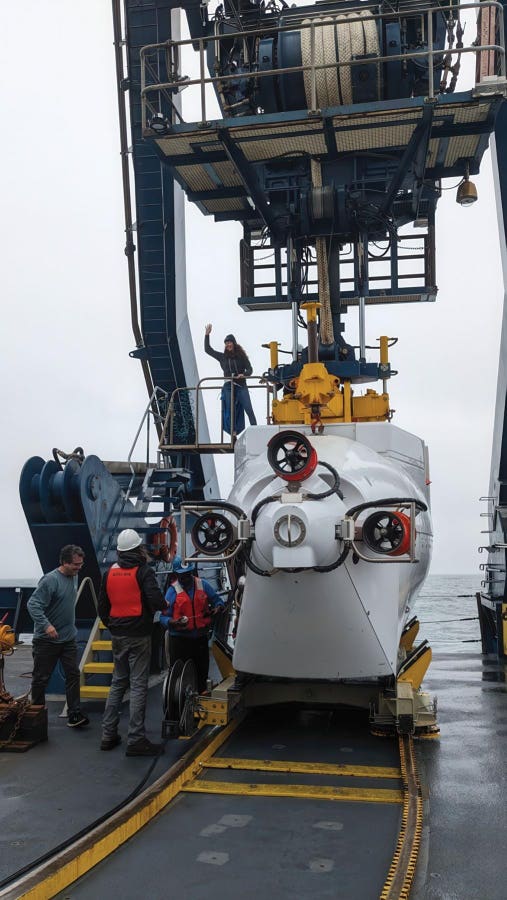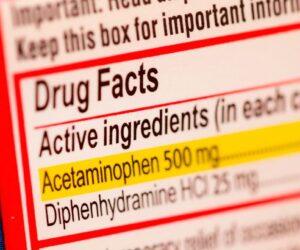“Boarding the Alvin submersible, August 31, 2023, Astoria Canyon off the coast of Oregon.”
In the tantalizing quest to find extraterrestrial life beyond our own solar system, or at least beyond Earth, we often forget the myriad ways in which life has evolved within our own planet’s deep subsurface. In truth, Earth is loaded with subsurface intraterrestrial microbial life — much of it bizarre beyond belief.
In her new book, “Intraterrestrials: Discovering the Strangest Life on Earth,” Karen G. Lloyd, a microbial biogeochemist at the University of Southern California, deftly leads us through her years-long global quest to understand the inner workings of these subsurface microbes.
It’s a fascinating take on this little-known hidden biosphere deep below the surface, which literally starts our feet and continues into parts unknown. Apparently, there’s a lot of fertile ground above the crust-mantle boundary, which is where subsurface life thrives, Lloyd notes. And no matter how deep we drill, we’ve never reached a place underneath the sea floor, or even in the deepest subterranean mines where some sort of microbial life hasn’t been found.
As for the term ‘intraterrestrial’?
It was actually coined by biogeochemist Karsten Pederson to describe life within Earth’s crust. However, in the last four decades, Lloyd and colleagues have learned that these intraterrestrials can thrive without photosynthesis, without the Sun, simply from geochemical reactions deep within the Earth. They can breathe rocks and sometimes live for thousands, perhaps millions of years.
Lloyd has been tracking these strange microbes at the bottom of oceans, inside volcanoes and deep within the Antarctic permafrost.
Tale Of Two Biospheres
These subsurface intraterrestrials can roughly be divided into two main types, she writes. The first depends on chemosynthesis rather than photosynthesis, the process by which living organisms make biomass from pure chemical reactions using no sunlight. The second type eats leftovers produced from photosynthesis that trickle down from Earth’s surface.
As Lloyd repeatedly makes clear, they seem to thrive on chemicals produced by rocks under the influence of great heat and pressure. Intraterrestrials use these chemicals to gain energy and build their bodies, just like plants do using sunlight at the surface, she notes.
How is the research community advancing this relatively new field of intraterrestrial research?
Arguably, the most ambitious remains Japan’s ship Chikyu which was designed to drill through Earth’s crust and into our mantle.
The mantle is the 2900 km-wide swath of dense rock that makes up 60% of the planet, bounded by Earth’s inner core and the 7000 km outer layer of our planetary crust. Drilling into the mantle is a feat that’s never been achieved, but the Chikyu has drilled up to 1.2 km into the sea floor off the coast of Japan. Yet as Lloyd acknowledges, it will have to drill a few more kilometers further through the thinnest part of the crust to reach Earth’s mantle.
If life is found in Earth’s mantle, that would likely change astrobiology in untold ways.
Because who could argue that any given planet, no matter how seemingly inhospitable, couldn’t harbor some sort of life? That goes for planets within our own solar system, including subterranean Mars, maybe even subterranean Venus, which to date, has been extraordinarily difficult to explore.
Intraterrestrials
Radiation Loving Bacteria
One of the oddest species is a radiation-loving bacterium that holds the record for the deepest life yet found on Earth. It was found thriving 2.8 km deep below the surface in a South African gold mine. Dubbed Desulforudis audaxviator, it apparently eats the reaction products of pure radiation and water.
Intraterrestrial Life’s Perplexing Longevity
Some intraterrestrials almost appear to be in stasis, but yet are not.
The fact that living cells likely exist in a nongrowth state for very long timescales raises two important questions, Lloyd writes. Are these microbes evolutionarily adapted to hang out in this undead, dormant state for thousands or millions of years, Lloyd wonders, or do they just persist because cells don’t need any special adaptations to stay alive for so long?
The Bottom Line?
Above all, the author gives us a completely new appreciation of how deep life is embedded in our own planet. But if they’re here, why won’t they also be abundant on myriads of far-flung extrasolar worlds? These could be planets that may not be suitable for bipedal species like our own but would make a perfect habitat for intraterrestrials.
That’s a sobering thought. Because it means that such subsurface life may never impact their home planet’s atmosphere enough to make their presence detectable via biosignatures.
Dreams of taking a reliable census of exoplanetary life in the galaxy may thus inherently be extremely limited. Such life may not be life as we know it. But, more crucially, even with our best telescopes these extrasolar intraterrestrials may never be readily detectable.









